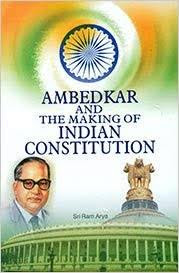Making of the Constitution of India
 |
| Making of Constitution |
Demand for a constituent Assembly
It was in 1934 that the idea of a constituent Assembly For India was put forward for the first time by M.N.Roy,a pioneer of communist movement in India.In 1935,the Indian National congress(INC),for the first time officialy demanded a constituent assembly to frame the constitution of India. In 1938,Jawaharlal nehru,on behalf the INC declared that ‘the Constitution of free India must be framed,without outside interference,by a constituent Assembly elected on the basic of adult franchise’.
The demand was finally accepted in principle by the British Government in what is known as the ‘August Offer’ of 1940.In 1942,sir Stafford Cripps,a member of the cabinet,came to India with a draft proposal of the British Government on the framing of an independent Constitution to be adopted after the world war II.The Cripps proposals were rejected by the muslim League which wanted India to be divided into two autonomous states with two separate Constituent assemblies.Finally,a Cabinet mission was sent to India.While it rejected the idea of two constituent assemblies,it put forth a scheme for the constituent assembly which more or less satisfied the Muslim League.
Composition of the Constituent assembly
The Constituent Assembly was constituted in November 1946 under the scheme formulated by the cabinet mission Plan.The features of the scheme were :-
1.The total strength of the Constituent assembly was to be 389.Of these 296 seats were to be allotted to British India and 93 seats to be the princely States.Out of 296 seats allotted to the British India,292 members were to be drawn from the eleven governor’s provinces and four from the four chief commissioners provinces,one from each.
2.Each province and princely state(or group of states in case of small states)were to be allotted seats in proportion to their respective population.Roughly,one seats was to be allotted for every million population.
3.Seats allocated to each British province were to be divided among the three principal communities -Muslims,Sikhs,and general (all except Muslims and Sikhs),in proportion to their population.
4.The Representatives of each community were to be elected by members of that community in the provincial legislative assembly and voting was to be by the method of proportional representation by means of single transferable vote.
5.The representatives of princely States were to be nominated by the heads of the princely States.
It is thus clear that the constituent Assembly was to be a partly elected and partly nominated body.Moreover,the members were to be indirectly elected by the members of the provincial assemblies,who themselves were elected on a limited franchise.The elections to the constituent Assembly (for 296 seats allotted to the British Indian provinces)were held in July -August 1946.The Indian National Congress won 208 seats,The Muslim League 73 seats and the small groups and independents got the remaining 15 seats.However,The 93 seats allotted to the princely States were not filled as they decided to stay away from the Constituent Assembly.
Although the constituent Assembly was not directly elected by the people of India on the basis of adult franchise,The Assembly comprised Representatives of all selections of Indian Society- Hindu, Muslims,Sikhs,Parsis, Anglo -Indians, Indian Christians, SCs,STs including women of all these sections. The Assembly included all important personalities of India at that time,with the exception of Mahatma Gandhi.